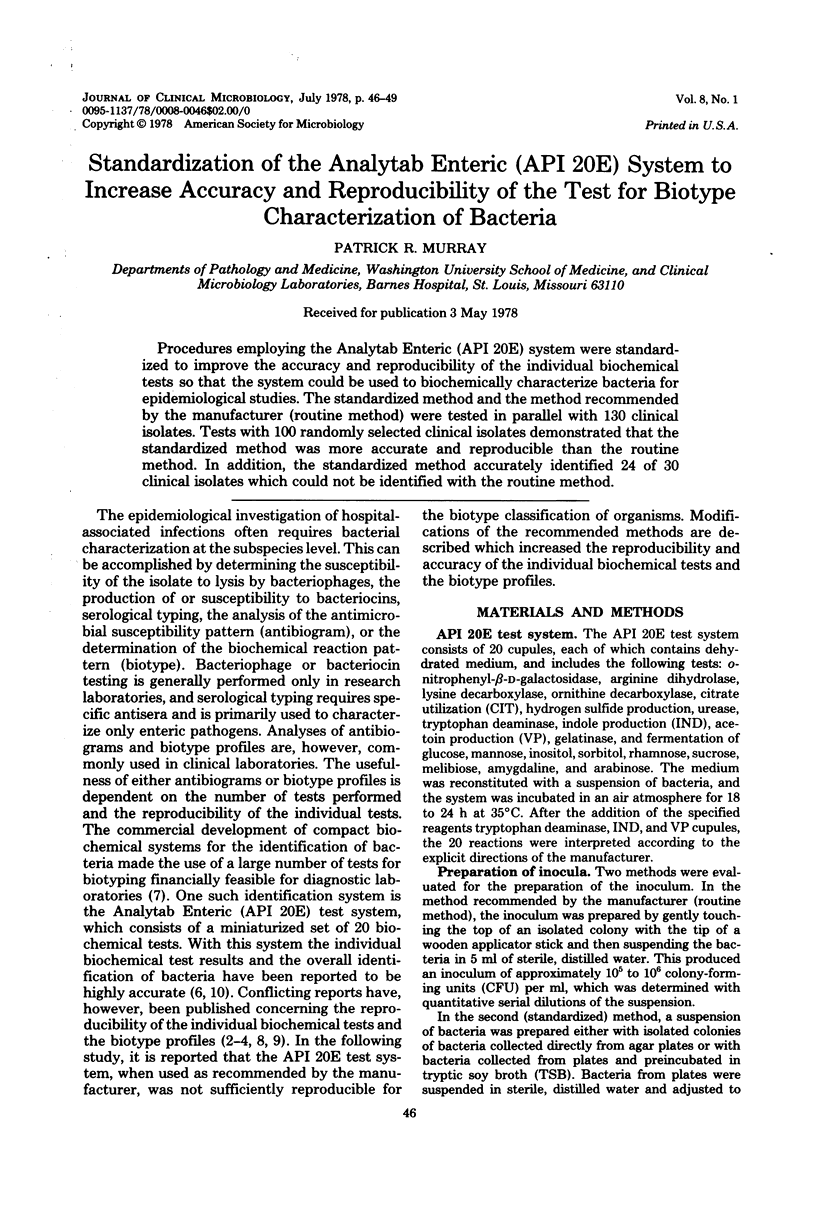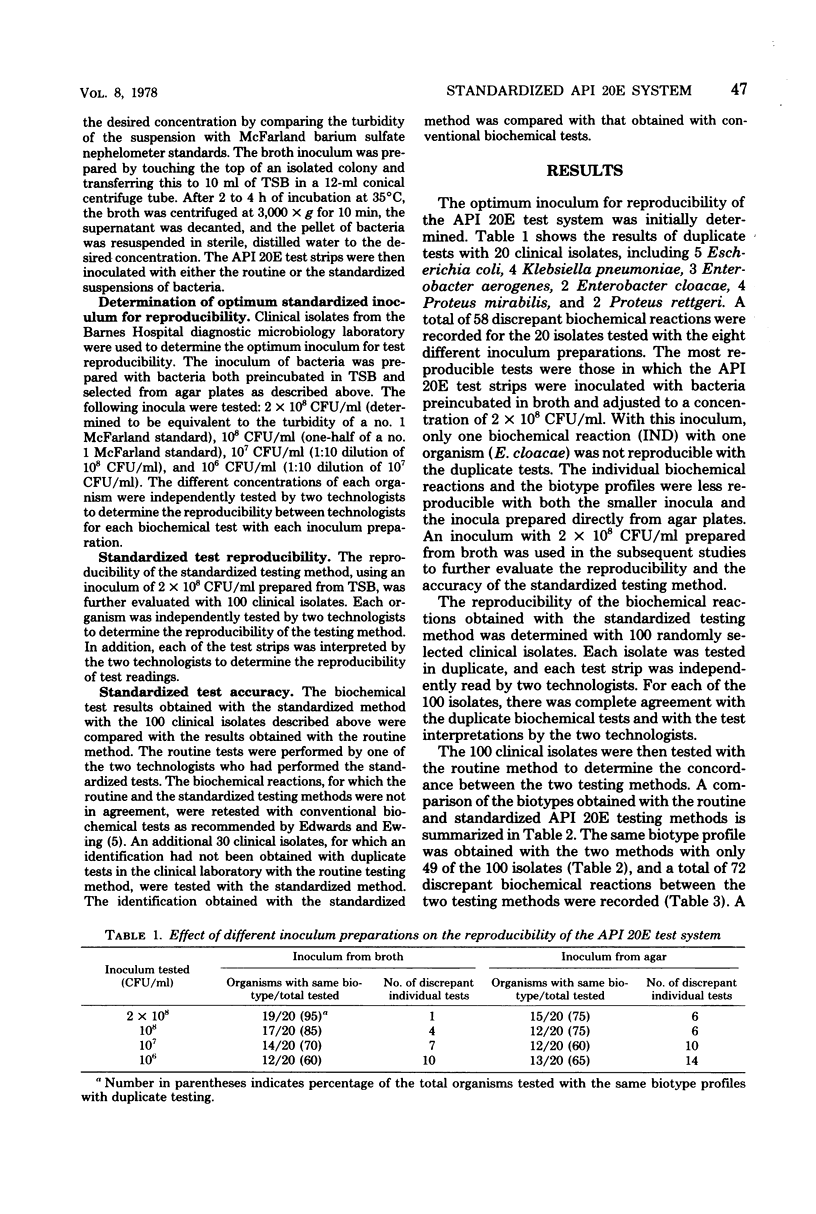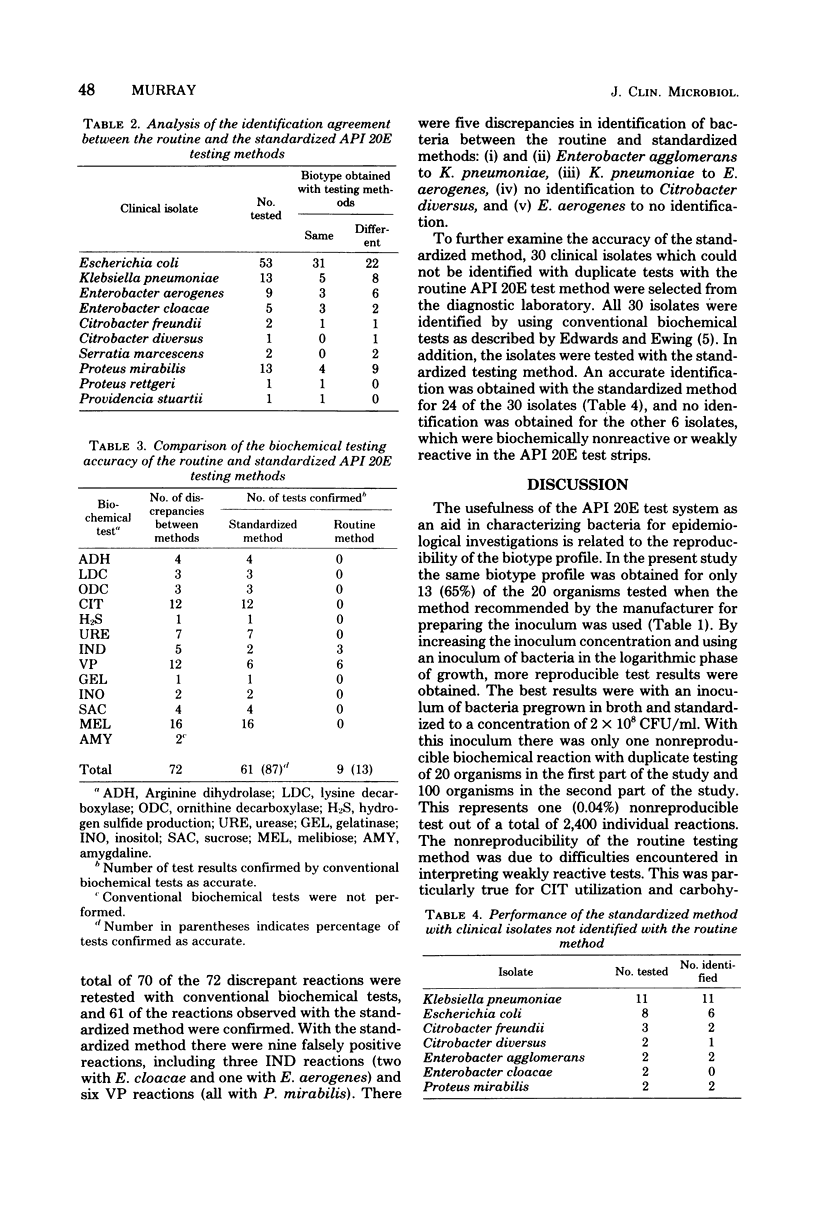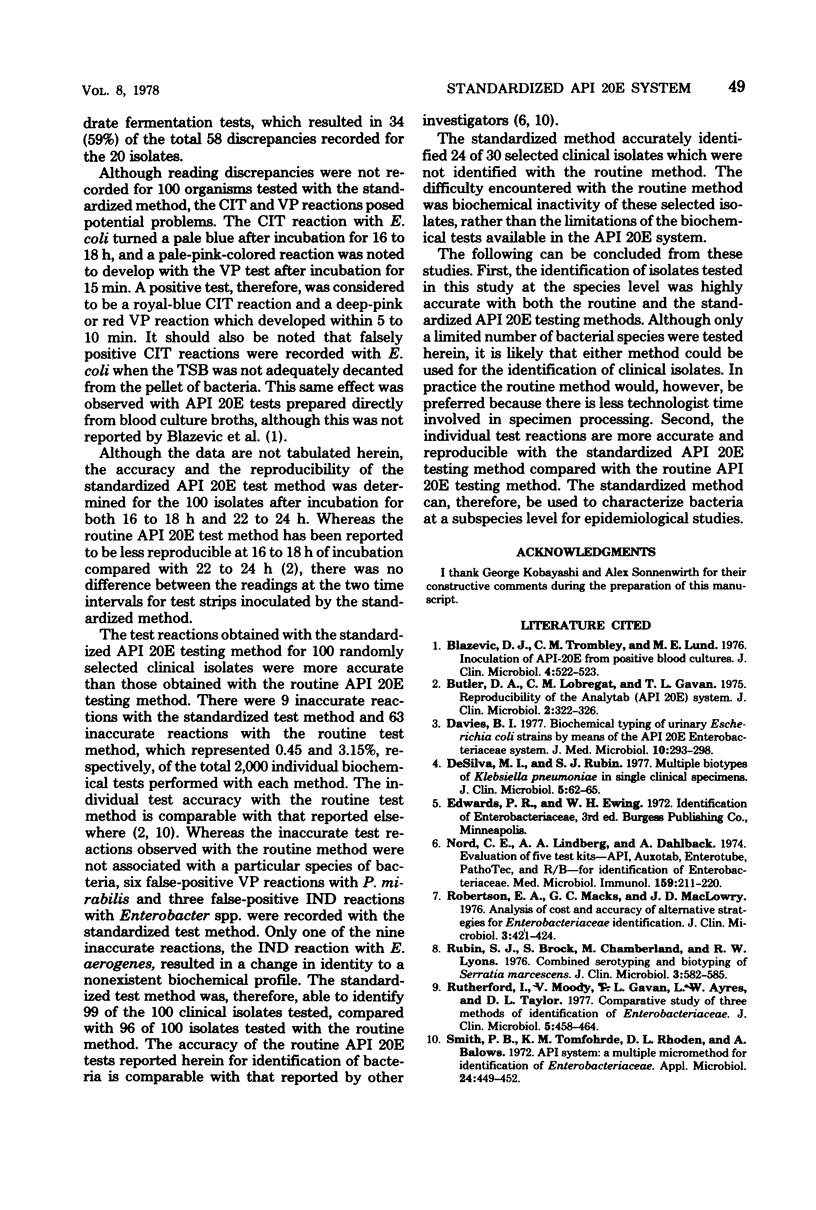Abstract
Procedures employing the Analytab Enteric (API 20E) system were standardized to improve the accuracy and reproducibility of the individual biochemical tests so that the system could be used to biochemically characterize bacteria for epidemiological studies. The standardized method and the method recommended by the manufacturer (routine method) were tested in parallel with 130 clinical isolates. Tests with 100 randomly selected clinical isolates demonstrated that the standardized method was more accurate and reproducible than the routine method. In addition, the standardized method accurately identified 24 of 30 clinical isolates which could not be identified with the routine method.
Full text
PDF



Selected References
These references are in PubMed. This may not be the complete list of references from this article.
- Blazevic D. J., Trombley C. M., Lund M. E. Inoculation of API-20E from positive blood cultures. J Clin Microbiol. 1976 Dec;4(6):522–523. doi: 10.1128/jcm.4.6.522-523.1976. [DOI] [PMC free article] [PubMed] [Google Scholar]
- Butler D. A., Lobregat C. M., Gavan T. L. Reproducibility of the analytab (API 20E) system. J Clin Microbiol. 1975 Oct;2(4):322–326. doi: 10.1128/jcm.2.4.322-326.1975. [DOI] [PMC free article] [PubMed] [Google Scholar]
- Davies B. I. Biochemical typing of urinary Escherichia coli strains by means of the API 20 E enterobacteriaceae system. J Med Microbiol. 1977 Aug;10(3):293–298. doi: 10.1099/00222615-10-3-293. [DOI] [PubMed] [Google Scholar]
- Nord C. E., Lindberg A. A., Dahlbäck A. Evaluation of five test-kits-API, AuxoTab, Enterotube, PathoTec and R-B-for identification of Enterobacteriaceae. Med Microbiol Immunol. 1974 Mar 22;159(3):211–220. doi: 10.1007/BF02121337. [DOI] [PubMed] [Google Scholar]
- Robertson E. A., Macks G. C., MacLowry J. D. Analysis of cost and accuracy of alternative strategies for Enterobacteriaceae identification. J Clin Microbiol. 1976 Apr;3(4):421–424. doi: 10.1128/jcm.3.4.421-424.1976. [DOI] [PMC free article] [PubMed] [Google Scholar]
- Rubin S. J., Brock S., Chamberland M., Lyons R. W. Combined serotyping and biotyping of Serratia marcescens. J Clin Microbiol. 1976 Jun;3(6):582–585. doi: 10.1128/jcm.3.6.582-585.1976. [DOI] [PMC free article] [PubMed] [Google Scholar]
- Rutherford I., Moody V., Gavan T. L., Ayers L. W., Taylor D. L. Comparative study of three methods of identification of Enterobacteriaceae. J Clin Microbiol. 1977 Apr;5(4):458–464. doi: 10.1128/jcm.5.4.458-464.1977. [DOI] [PMC free article] [PubMed] [Google Scholar]
- Smith P. B., Tomfohrde K. M., Rhoden D. L., Balows A. API system: a multitube micromethod for identification of Enterobacteriaceae. Appl Microbiol. 1972 Sep;24(3):449–452. doi: 10.1128/am.24.3.449-452.1972. [DOI] [PMC free article] [PubMed] [Google Scholar]
- de Silva M. I., Rubin S. J. Multiple biotypes of Klebsiella pneumoniae in single clinical specimens. J Clin Microbiol. 1977 Jan;5(1):62–65. doi: 10.1128/jcm.5.1.62-65.1977. [DOI] [PMC free article] [PubMed] [Google Scholar]


